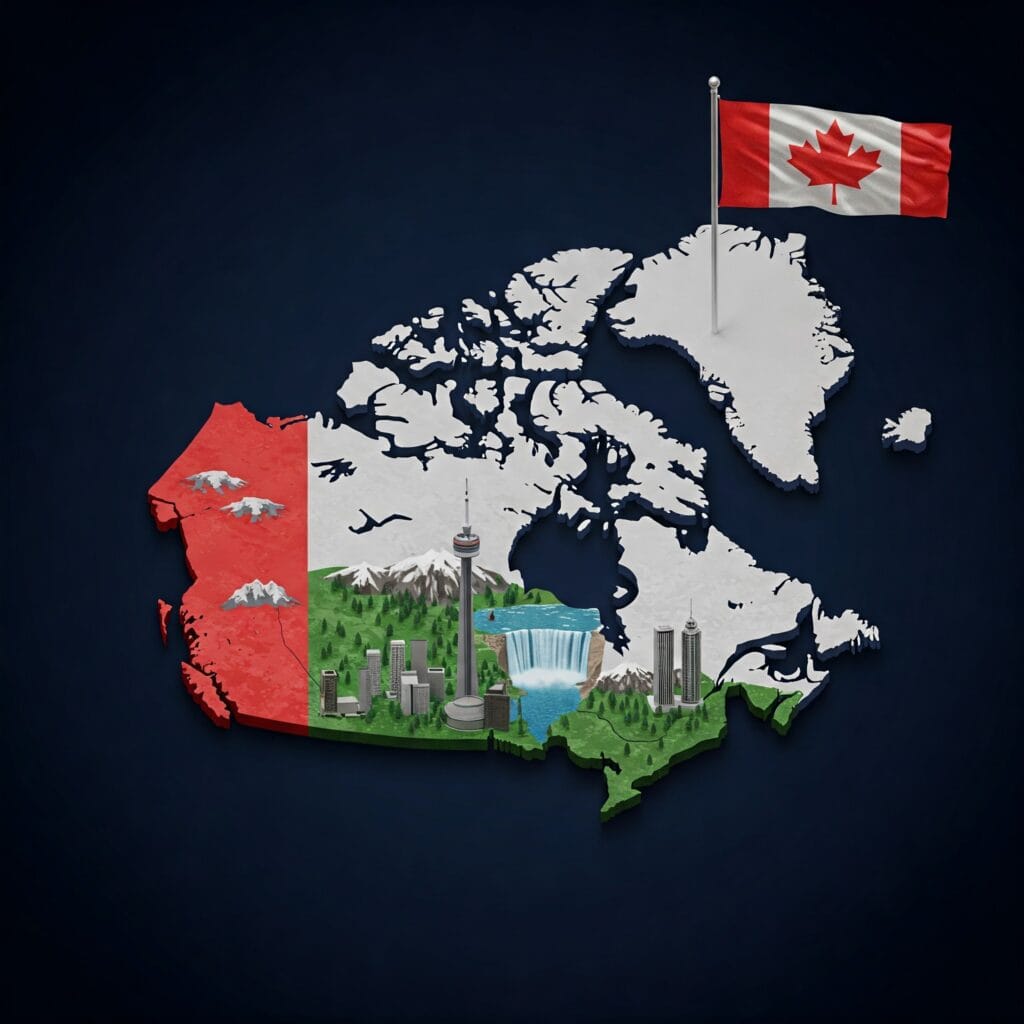
More than 2.36 Million Record Visa Applications Rejected in Canada: Reasons Explained
Introduction
In 2024, Canada faced a significant immigration challenge as it rejected over 2.36 million temporary resident applications, marking a record high. This alarming statistic reflects a rejection rate of 50%, a sharp increase from previous years. The surge in rejections has raised concerns among prospective migrants and has implications for Canada’s economy and social fabric.
The reasons behind this unprecedented number of visa applications rejected are multifaceted, including stricter immigration policies aimed at managing population growth and alleviating pressure on housing and public services. This article delves into the details of these changes, the categories of visas affected, and the broader implications for Canada’s immigration landscape.
Overview of Visa Application Rejections
Statistics on Rejections
The Immigration, Refugees and Citizenship Canada (IRCC) reported that 2,359,157 temporary resident applications were denied in 2024. This figure represents the highest rejection rate since before the COVID-19 pandemic, highlighting a significant shift in Canada’s immigration landscape.
Comparison with Previous Years
The rejection rate has seen a sharp increase from 35% in 2023 to 50% in 2024. This change has sent shockwaves through applicant communities, as many who once viewed Canada as a welcoming destination now face unprecedented scrutiny.
Categories of Visa Applications Affected
Visitor Visas
Visitor visa applications have been particularly hard hit, with 1.95 million applications rejected in 2024. This represents a 54% rejection rate, up from 40% the previous year. The increase in rejections is largely due to heightened scrutiny aimed at preventing overstays.
Study Permits
The study permit category has also seen a significant rise in rejection rates, with 290,317 applications denied in 2024. The refusal rate for study permits jumped from 38% in 2023 to 52% in 2024, reflecting stricter eligibility criteria and financial requirements.
Work Permits
While work permit rejections dipped slightly from 23% to 22%, the overall trend indicates a more selective approach to immigration. The government is focusing on balancing economic needs with immigration control, particularly in sectors facing labor shortages.
Reasons Behind the Increased Rejections
Immigration Policy Changes
The Canadian government has implemented a series of immigration policy changes aimed at reducing the number of temporary residents. These changes are part of a broader strategy to manage population growth and alleviate pressure on housing and public services.
Population Control Measures
Canada’s population has surged in recent years, particularly following the COVID-19 pandemic. Temporary residents accounted for 6.5% of the population by 2023, leading to increased strain on housing, healthcare, and public services. The government aims to reduce this figure to 5% by 2026.
Resource Strain on Housing and Healthcare
The influx of temporary residents has placed significant pressure on Canada’s housing market and healthcare system. By tightening immigration policies, the government hopes to stabilize these essential services and ensure they can adequately support the population.
Impact on International Students
Changes in Study Permit Applications
International students have been disproportionately affected by the recent policy changes. The IRCC has set a cap of approximately 360,000 new study permits for 2024, a deliberate move to manage growth after years of unchecked expansion.
Financial Requirements and Eligibility
Stricter eligibility criteria have been introduced, requiring students to demonstrate financial security through proof of income. Those unable to meet these requirements face rejection, disrupting the plans of thousands of students hoping to study in Canada.
Visitor Visa Scrutiny
Increased Rejection Rates
Visitor visa applications have faced the harshest cuts, with a 54% rejection rate in 2024. This increase is attributed to the government’s efforts to prevent overstays and ensure that applicants have sufficient ties to their home countries.
Common Reasons for Denial
Common reasons for visitor visa denials include insufficient ties to home countries, vague travel purposes, and concerns about the applicant’s intent to return. These factors have led to a more rigorous evaluation process for applicants.
Work Permit Changes
Overview of Work Permit Applications
While work permit refusals have slightly decreased, the overall trend indicates a more selective approach. The government is focusing on ensuring that foreign workers fill essential roles in sectors facing labor shortages.
Economic Implications
The tightening of work permit regulations may have economic implications, particularly in industries that rely heavily on foreign labor. Stricter Labor Market Impact Assessments (LMIAs) aim to target low-value applications while preserving essential talent.
Government’s Response to Visa Rejections
New Immigration Policies
In response to the rising rejection rates, the Canadian government has announced new immigration policies aimed at attracting skilled workers and students while managing population growth. These policies are designed to balance the need for talent with the realities of resource management.
Future Plans for Temporary Residents
The IRCC’s 2025-2027 Immigration Levels Plan hints at continued restraint, with temporary resident targets holding steady or declining. This approach reflects the government’s commitment to addressing the challenges posed by rapid population growth.
Public Reaction and Expert Opinions
Mixed Responses from the Public
The public reaction to the increased rejection rates has been mixed. While some support the government’s efforts to manage population growth, others express concern about the impact on Canada’s global image as a welcoming destination.
Expert Analysis on the Implications
Experts warn that the tightening of immigration policies could have long-term consequences for Canada’s economy. The potential loss of international students and skilled workers may hinder growth in key sectors and impact the overall economy.
Long-term Effects on Canada’s Economy
Potential Benefits and Drawbacks
The reduction in temporary residents may ease pressure on housing and healthcare systems, but it could also create challenges in sectors that depend on foreign talent. The balance between managing resources and attracting skilled workers will be crucial for Canada’s future.
Impact on Key Sectors
Industries such as education, healthcare, and tourism may face significant challenges if the trend of rising rejection rates continues. The potential loss of international students and skilled workers could weaken these sectors and impact economic growth.
Conclusion
The rejection of more than 2.36 million visa applications in Canada marks a significant turning point in the country’s immigration policy. As the government implements stricter regulations to manage population growth and alleviate pressure on resources, prospective applicants must navigate an increasingly complex landscape. Understanding the reasons behind these changes and their implications is essential for anyone considering a move to Canada.
FAQ
What are the main reasons for visa application rejections in Canada?
Common reasons for visa rejections include not meeting the eligibility criteria, insufficient documentation, failing the English language requirement, and not having a valid Certificate of Sponsorship.
How can I improve my chances of getting a visa to Canada?
To improve your chances, ensure that you meet all eligibility requirements, provide complete and accurate documentation, and demonstrate strong ties to your home country.
What should I do if my visa application is rejected?
If your application is rejected, you can appeal the decision or reapply, addressing the reasons for the initial rejection. It may be beneficial to consult with an immigration lawyer for guidance.
Are there any changes to the study permit process in Canada?
Yes, recent changes have introduced stricter eligibility criteria and caps on the number of study permits issued, impacting international students.
How does the increase in visa rejections affect Canada’s economy?
The increase in visa rejections may lead to labor shortages in key sectors, impacting economic growth and the overall labor market.
Explore Other Articles:
- Sweden Job Seeker Visa – How to Apply
- Portugal’s Job Seeker Visa – What You Need to Know
- Germany EU Blue Card – Benefits and Requirements
Outbound Links
- For more information on the Immigration Health Surcharge, visit the UK Government’s official page.
- To understand the Certificate of Sponsorship process, check the UK Government’s guidance.
- For details on the points-based immigration system, refer to the UK Government’s further details statement.
- For visa processing times, visit the UK Government’s visa processing times page.
Discover more from Find Sponsored Jobs
Subscribe to get the latest posts sent to your email.





